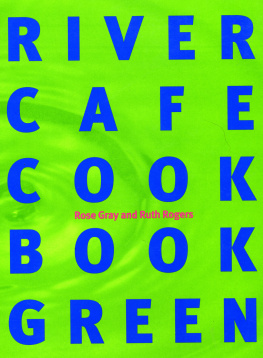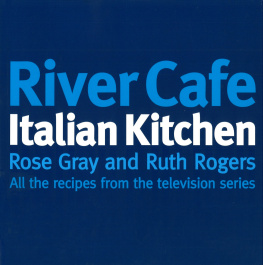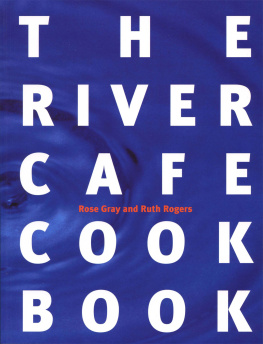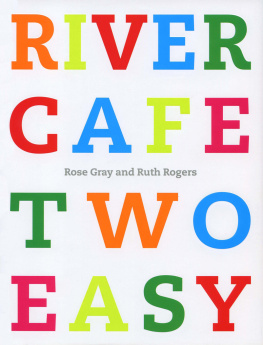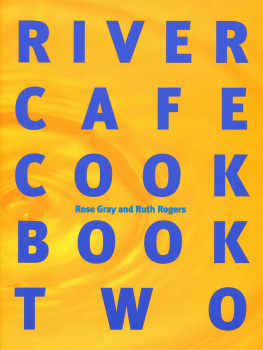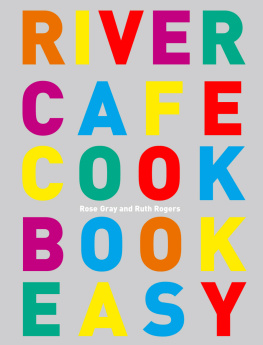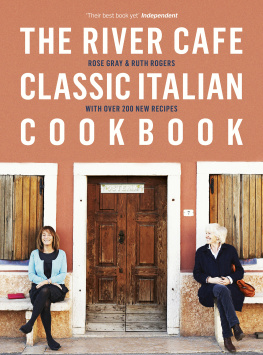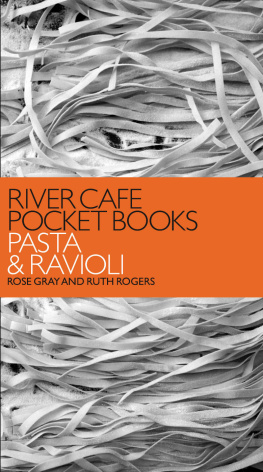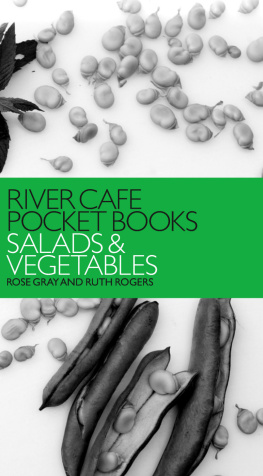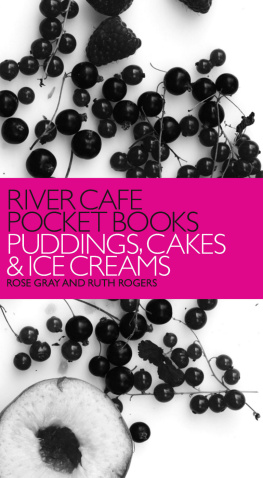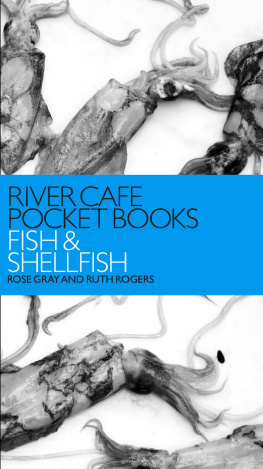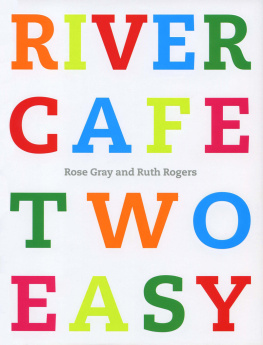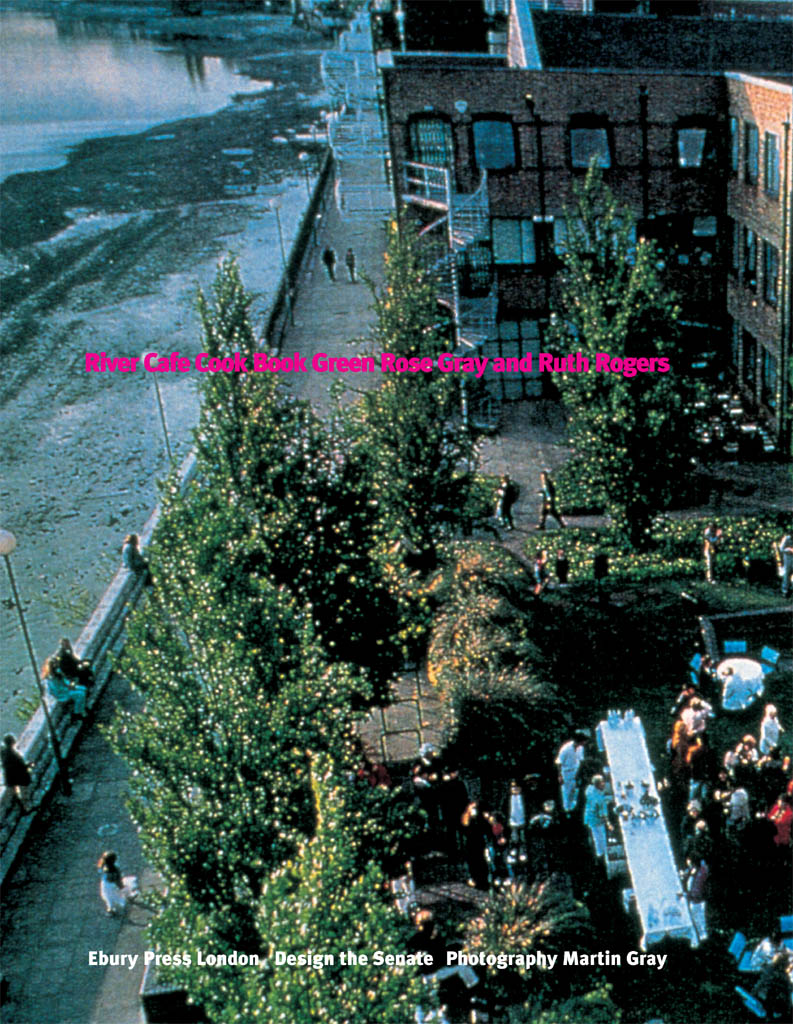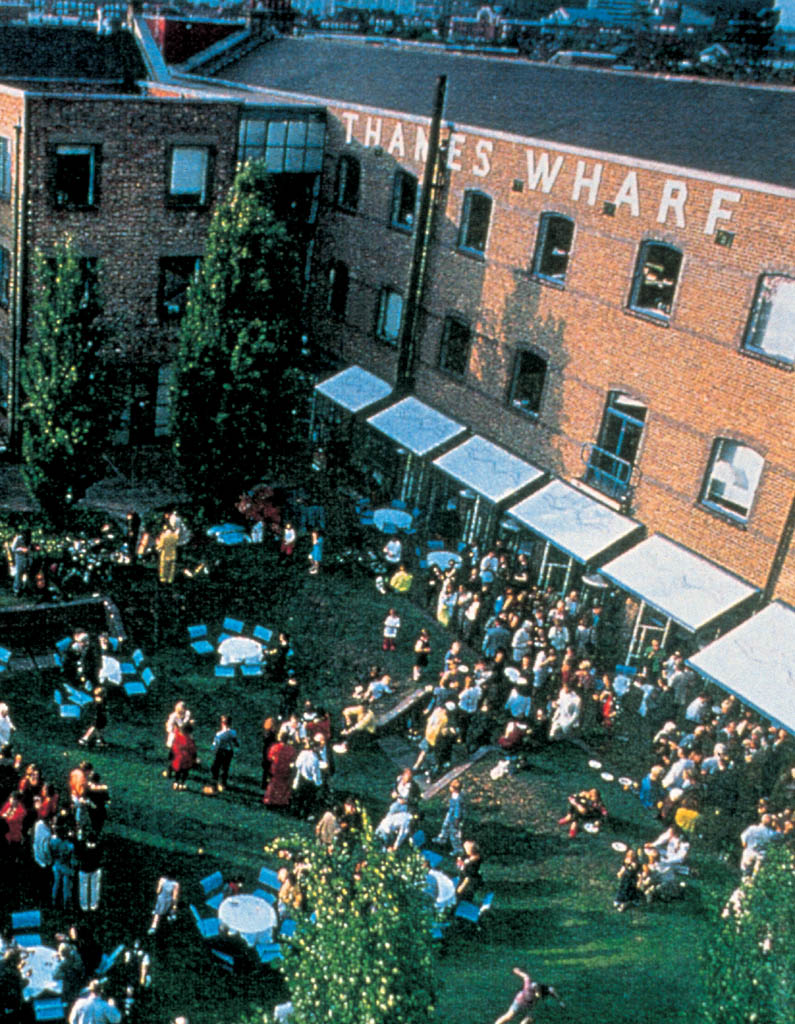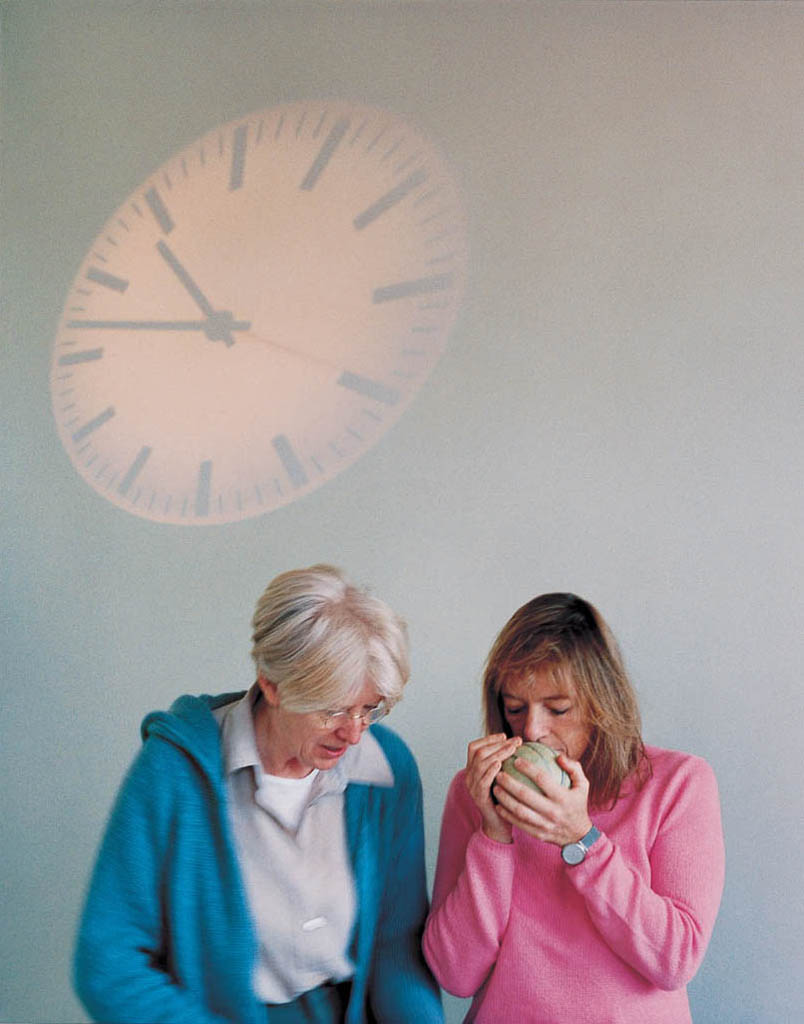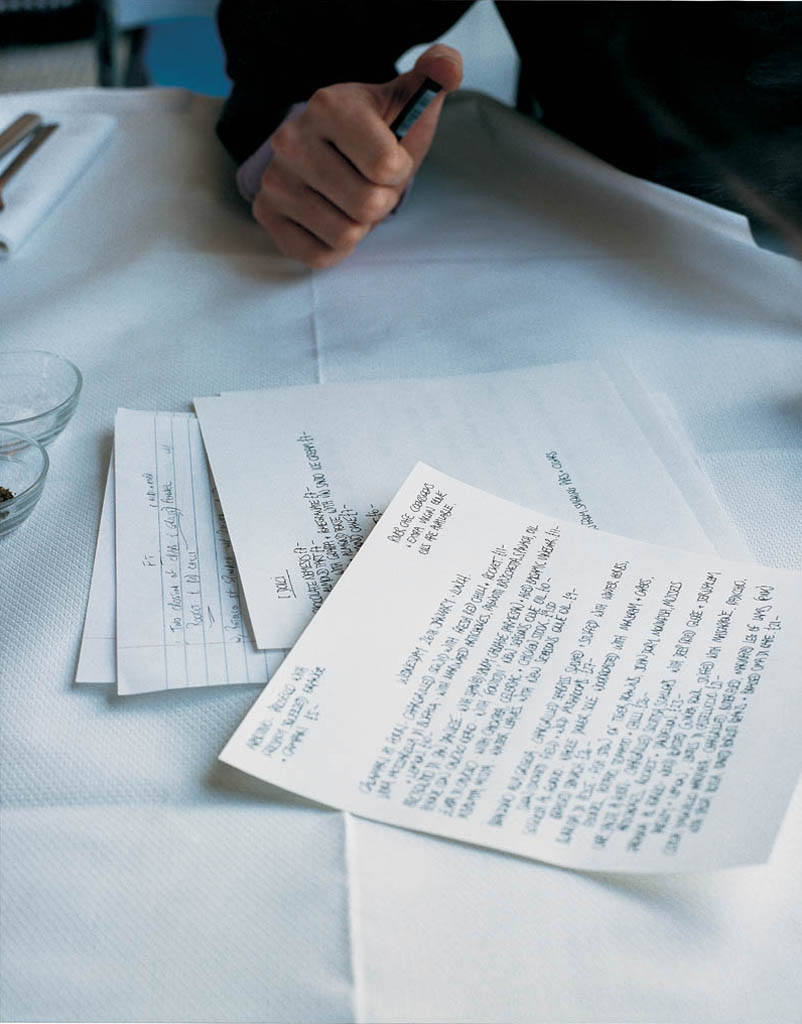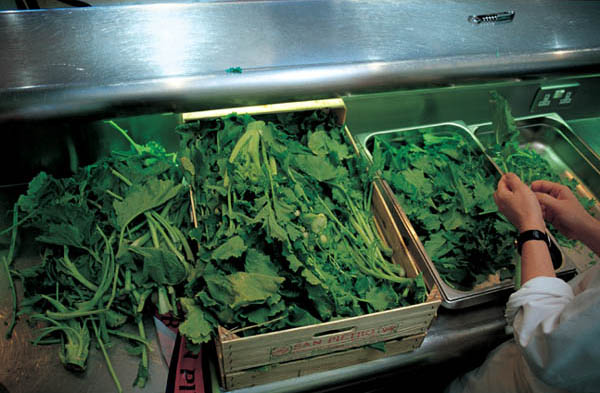contents
list of recipes
Introduction
Word spread. People started arriving at our door. A woman from our local allotment began to bring her surplus sorrel in the early spring. In April, a friend would pick stinging nettles by the bag-full from his farm in Hampshire. Other enthusiasts appeared with sea kale from the south coast beaches. Later in the year our builder exchanged the huge puffball mushrooms that grow near his house for bottles of Chianti Classico. When people realised we at the River Cafe were interested in fresh, unusual, wild produce they wanted to participate.
Our passion for vegetables and fruit in season has been at the heart of the River Cafe since we first opened in 1987. Every day, outside the kitchen, we pick from our organic garden many varieties of basil, marjoram and mint, and interesting leaves such as purslane, cicoria, and trevise to use in our recipes. And the simple pleasure of all this, of fresh, seasonal eating, is behind River Cafe Cook Book Green, our third cookbook.
Like the others, it is heavily influenced by our love of Italy, our many visits over many years, and our growing appreciation of the glorious variety of Italian food. All cooking starts in the market, the market reflects where you are, and the season around you. There is the joy in April when the first delicate broad beans arrive; that rich day in October when every stall is loaded with wild mushrooms gathered only that morning; the gentle sadness of biting into that last fresh cherry knowing that soon the brief season is over.
Over the years we have worked with our suppliers from New Covent Garden, encouraging them to bring Italian market produce to London. Now lorries arrive laden with trevise from Verona, artichokes from Rome, borlotti beans from Puglia. These wonderful vegetables are slowly spreading throughout Britain and more and more greengrocers and supermarkets are selling them. If you have a garden you should experiment with growing your own. If not, try farmers markets, pick-your-own farms and organic box schemes. But above all develop a relationship with your greengrocer, urging him to supply interesting varieties.
We thought the moment was ripe for a book of this kind, in which we have divided the year not simply into seasons but into months. We wanted to show how specific vegetables are used in specific months for specific recipes romanesco artichokes for deep-frying whole, the violettas for slicing finely to be eaten raw in salads; how to choose different varieties of tomatoes cherry vines for fresh pasta sauces, plums for slow-cooked ones and the huge yellow tomatoes for rubbing on to bruschetta. There are recipes using wild ingredients, stinging nettles, sorrel and thistles for flavouring pastas or simply combining to make a delicious insalata di campo.
Our cooking has become increasingly focused on the garden and its produce. In the summer we make fresh pasta with olives and tomatoes and a risotto of summer squash; in October when the chestnuts appear we put them in soup with celeriac; in the winter we eat salads of puntarelle with anchovies and vin santo, and for Christmas we make a cake with crystallised clementines; in the spring we make a raw artichoke pesto to go with homemade tagliarini.
These are not complicated recipes, and our message is simple too: good cooking is about fresh seasonal ingredients, organic whenever possible, used thoughtfully. It is something the Italians have always known and we hope that with this book you will share our pleasure in rediscovering this simple truth.
Rose Gray and Ruth Rogers London 2000
About the Book
The first two River Cafe cookbooks were landmarks in cookery publishing. Now River Cafe Cook Book Green, with its focus on seasonal vegetables and fruits, will bring about another change in the way we approach food. With over 200 wonderful new Italian recipes, using everything from artichokes and figs to porcini and chestnuts, Rose Gray and Ruth Rogers share their knowledge of the superb produce that is the key to their cooking.
For them the choice of ingredients has always been important and they believe passionately that the best fruit and vegetables are those which are harvested in season and have been grown organically. River Cafe Cook Book Green is divided into 12 months, with each month suggesting what to buy and cook at that time. Delicious, easy recipes then follow, ranging from White Asparagus Risotto and Minestrone of Broad Beans to Tomato, Butter and Nutmeg Penne and Pear, Honey and Polenta Cake.
fresh ideas shining from every page the authors enthusiasm for vegetables and fruit and their relentless search for quality is legendary, but somehow the recipes seem even more tempting in this, their third book. This is as dazzling and imaginative a collection of vegetable recipes as you are ever likely to find in one book. I love their restaurant and I love their recipes. Ruth Rogers and Rose Gray have done it again.Nigel Slater, The Observer
Like Jane Grigsons Vegetable Book, written way ahead of its time, I have a hunch that this will turn out to be similarly far-sighted. Harpers & Queen.
Their two astonishingly successful books have already sold over a million, but in many ways the latest is the best of the lot. Sunday Express
About the Authors
Ruth Rogers is the American-born wife of architect Richard Rogers. Rose Gray ran the kitchen at Nells Club in New York before joining Ruth Rogers to launch the River Cafe. Together they have made the River Cafe one of the most respected restaurants in the world and have trained many of the new generation of star chefs, from Samuel and Samantha Clarke to Jamie Oliver.
january
cime di rapa
Cime di rapa, broccoletti di rapa and rapini are the Italian names for this delicious green winter vegetable, part of the turnip and cabbage, or Brassica, family. It is grown for its greens, which form like sprouting broccoli. It tastes bitter and peppery, a little like turnip. Cime di rapa should be picked before the shoots have started to flower, and when the leaves are still green and tender.
Even in Italy this vegetable was only found in particular regions ten years ago. Now it is found in shops and markets all over the country. In Britain it is still hardly known, and is only available in a few speciality vegetable shops. We are starting to grow it on a small scale from Italian seed, and hope that in a few years it will become established as the market widens.
Look for bright green, tender leaves on crisp strong stalks, with tightly closed flower heads. Discard the tough or blemished outer leaves and cut the younger leaves and flower stems from the main stalk.
The leaves of cime are fine and cook very quickly, like spinach. Drain them well and season with extra virgin olive oil, salt and pepper. In Rome, plates of cime di rapa cooked in this simple way are always part of antipasti di verdura.
Next page
